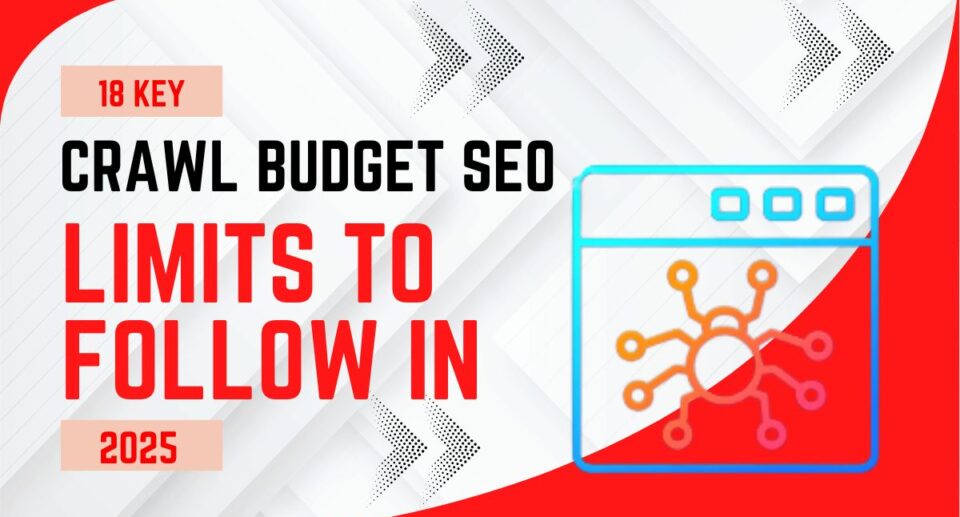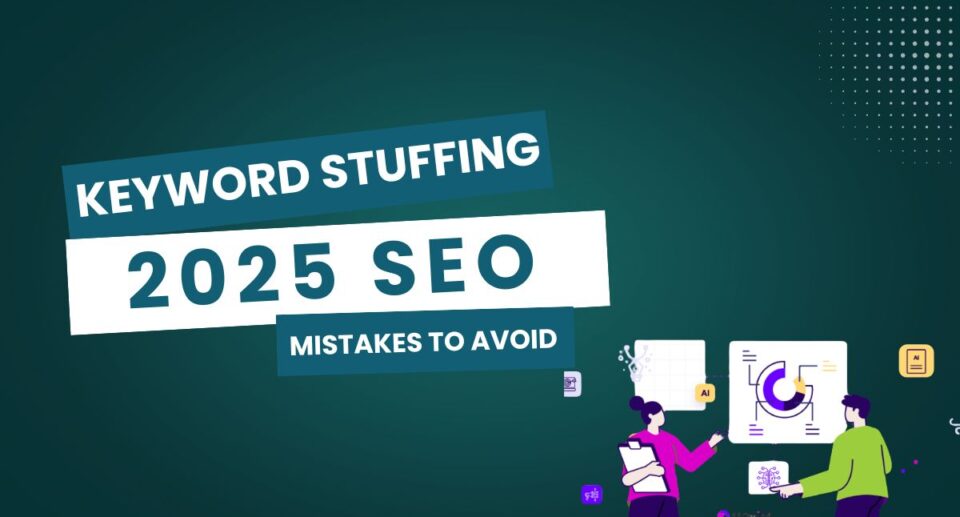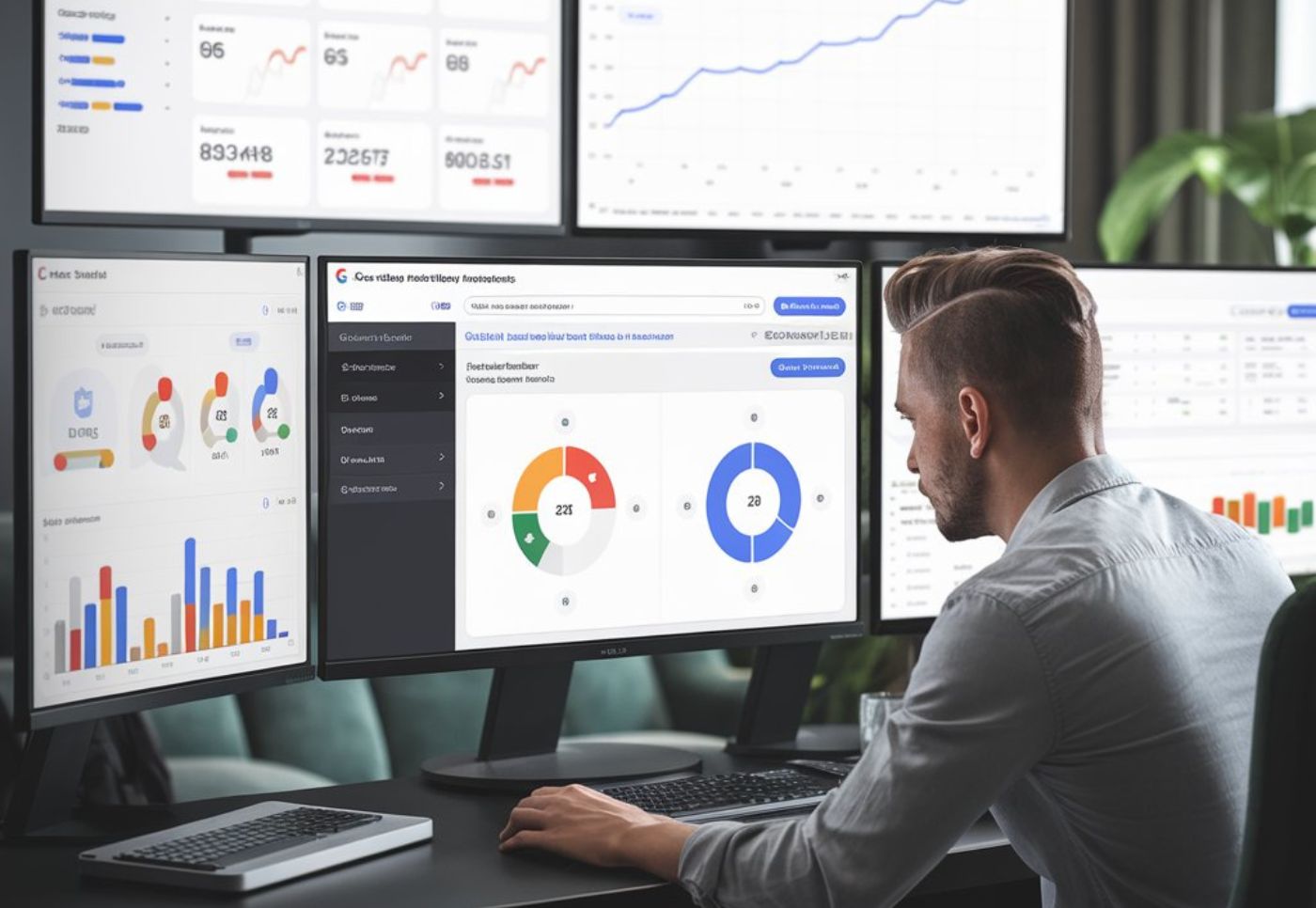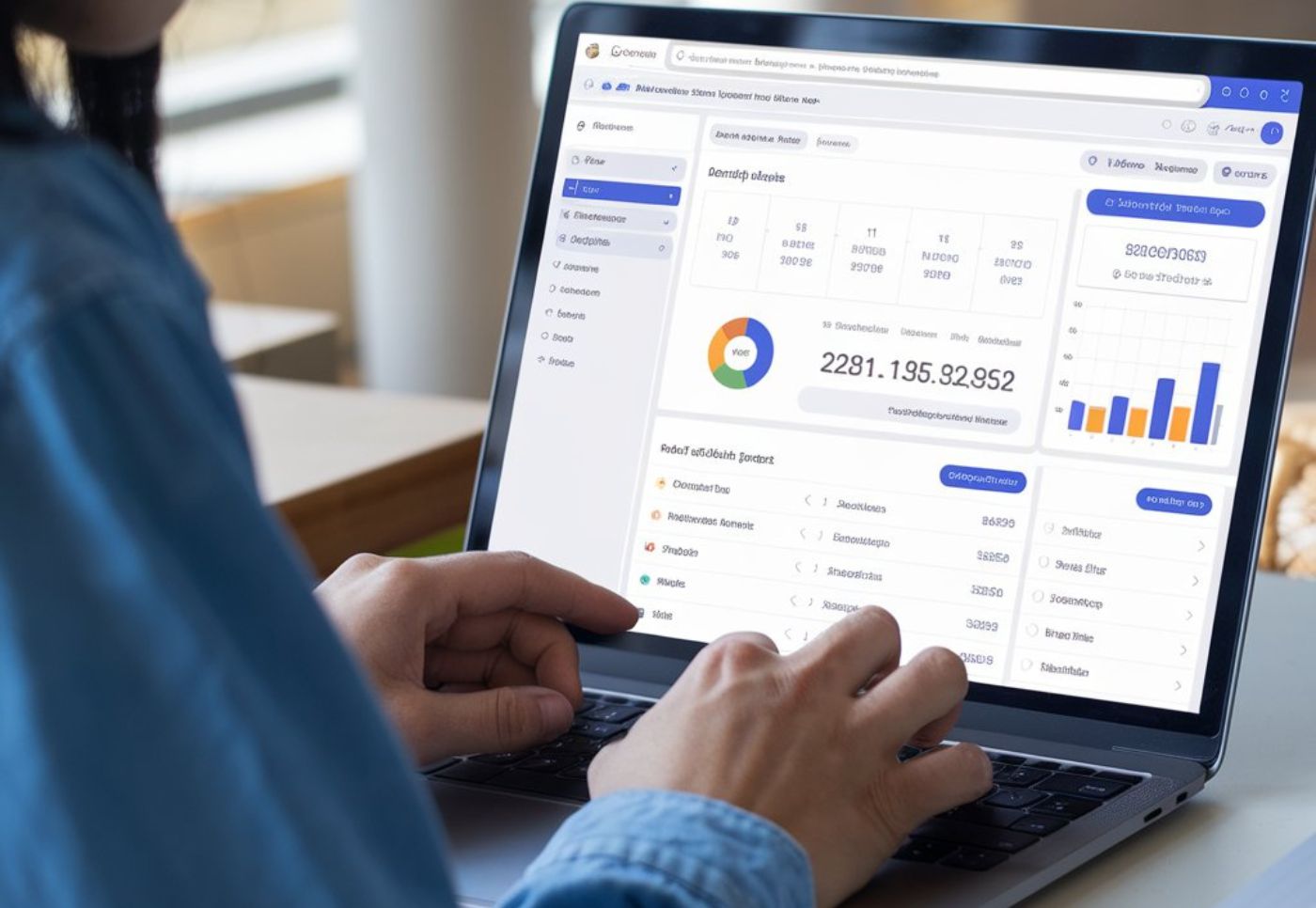Crawl Budget SEO: 18 Key Limits to Follow in 2025

Introduction
Have you ever wondered why your aggressive SEO tactics aren’t delivering the results you expected? Or perhaps you’ve been pushing the boundaries of optimization only to see your rankings drop instead of improve? The truth is, effective SEO in 2025 isn’t about maximizing every possible tactic—it’s about respecting crucial limitations. One of the most overlooked yet vital concepts is crawl budget SEO, which exemplifies how search engines impose natural constraints on your optimization efforts. Every website has a finite crawl budget—the number of pages search engines will crawl during each visit—and exceeding this invisible boundary can severely impact your visibility. This comprehensive guide explores the essential SEO limits you must respect to maintain sustainable rankings, preserve your site’s reputation, and avoid devastating penalties. From content creation to technical implementation, you’ll discover why sometimes in SEO, less is indeed more, and how working within established boundaries actually creates the foundation for lasting organic success crawl budget seo.
Why Understanding SEO Boundaries Is Crucial in 2025
 The Evolving Search Landscape
The Evolving Search Landscape
Search engines have undergone remarkable evolution since their early days. What worked in SEO even three years ago might now trigger penalties or undermine your entire digital strategy. In 2025, Google’s algorithms leverage advanced AI and machine learning to assess websites with unprecedented sophistication, making boundary violations easier to detect than ever before crawl budget seo.
According to a recent study by Backlinko, sites that violate Google’s guidelines see an average ranking drop of 38% within three months of detection. That’s not just a minor setback—it’s potentially business-ending for companies relying heavily on organic traffic crawl budget seo.
The True Cost of Crossing SEO Boundaries
Imagine your website as a trust account with search engines. Every time you respect the rules, you make a deposit. Every violation is a withdrawal. Too many withdrawals, and your account goes into the negative—resulting in penalties that can take months or even years to recover from crawl budget seo.
The most severe consequences include:
- Complete de-indexing from search results
- Manual penalties requiring formal reconsideration requests
- Dramatic traffic drops affecting revenue and brand visibility
- Long-term reputation damage requiring extensive rehabilitation
The Concept of SEO Equilibrium
Think of SEO like a balanced ecosystem. Push too hard in one direction, and you create instability. The most successful websites maintain what I call “SEO equilibrium”—optimizing enough to be competitive but respecting the natural limits that keep the system healthy crawl budget seo.
In my decade of SEO consulting, I’ve seen countless businesses destroy years of hard work by crossing critical boundaries in pursuit of quick gains. The websites that consistently perform well over time are invariably those that understand and respect these essential limits crawl budget seo.
Essential Tools to Monitor Your SEO Limits
Before diving into specific boundaries, let’s explore the tools that help you stay within safe parameters:
Core SEO Monitoring Tools
- Google Search Console – The official source of crawl stats and manual action notifications
- Screaming Frog SEO Spider – For comprehensive crawl analysis and technical audits
- Semrush – For competitive research and ranking monitoring
- Ahrefs – For backlink analysis and site health
- PageSpeed Insights – For Core Web Vitals and performance boundaries crawl budget seo
Specialized SEO Limitation Tools
- Sitebulb – Advanced crawl budget analysis and crawl efficiency metrics
- ContentKing – Real-time SEO monitoring and change detection
- Copyscape – Content uniqueness verification
- Link Detox – Toxic backlink identification
- Schema App – Structured data validation
TIP: Create a monthly “boundary check” routine using these tools to ensure you’re staying within safe SEO parameters. This proactive approach prevents many common penalties crawl budget seo.
Now, let’s explore the specific limits you must respect across different SEO dimensions.
Content & Keyword Boundaries You Shouldn’t Cross
Keyword Usage Thresholds
1. Keyword Density Ceiling
While keywords remain important, their appropriate usage has clear limits. Google’s NLP (Natural Language Processing) technology easily identifies unnatural keyword patterns crawl budget seo.
Limit: Keep keyword density between 0.5% and 2% maximum. For a 1,000-word article, your focus keyword should appear no more than 5-20 times, always in natural context crawl budget seo.
Consequence of Violation: Content devaluation, reduced rankings, potential thin content penalties.
Safe Alternative: Focus on topic coverage rather than keyword frequency. Use related terms, synonyms, and semantic variations instead of repeating the exact keyword.
2. Meta Title & Description Boundaries
Metadata elements have both technical and quality limitations.
Limits:
- Title tags: 50-60 characters (avoid truncation in SERPs)
- Meta descriptions: 120-155 characters
- Use your focus keyword once in each, placed naturally
- Avoid clickbait promises you can’t fulfill in the content
Consequence of Violation: Lower click-through rates, potential misleading content penalties, and reduced SERP visibility.
Safe Alternative: Write compelling, accurate meta information that sets proper expectations for the content.
3. Content Length Considerations
Content length should be determined by user needs, not arbitrary word counts.
Limits:
- Avoid thin content (under 300 words) for important pages
- Don’t artificially inflate word count with fluff
- Don’t publish multiple similar articles targeting slight keyword variations
Consequence of Violation: Content devaluation, reduced user engagement metrics, potential duplicate/thin content penalties.
Safe Alternative: Create comprehensive resources that fully address user intent, regardless of length.
Content Quality Boundaries
4. AI-Generated Content Limitations
While AI writing tools have evolved dramatically, their use comes with important constraints.
Limits:
- Never publish raw AI output without human editing
- Avoid using AI to create multiple similar variations of content
- Don’t use AI to artificially create massive content volumes overnight
Consequence of Violation: Content devaluation under the helpful content system, reduced E-E-A-T signals, potential spam classification.
Safe Alternative: Use AI as a starting point or assistant, but ensure human expertise, fact-checking, and original insights shape the final content.
5. E-E-A-T Signaling Boundaries
There are clear limits to how Experience, Expertise, Authoritativeness, and Trustworthiness can be established.
Limits:
- Don’t claim false credentials or expertise
- Avoid making medical, financial, or legal claims without proper qualifications
- Don’t fabricate statistics or research
- Don’t present opinions as facts
Consequence of Violation: Severe trust loss, potential YMYL (Your Money Your Life) penalties, dramatically reduced visibility.
Safe Alternative: Be transparent about expertise levels, cite authoritative sources, clearly separate opinion from fact, and stay within your legitimate knowledge areas.
Technical SEO Limitations to Respect
Crawl Budget & Indexing Constraints
6. Crawl Budget Management
Crawl budget SEO refers to the limits search engines place on how many pages they’ll crawl and how frequently. Understanding these constraints is essential for large websites.
Limits:
- Don’t allow indexing of low-value pages (admin, tags, filtered variations)
- Avoid excessive internal linking that dilutes crawl focus
- Don’t publish large volumes of new content without considering crawl implications
Consequence of Violation: Critical pages receiving insufficient crawl attention, delayed indexing of important content, and reduced overall site visibility.
Safe Alternative: Implement strategic crawl budget SEO management by:
- Using robots.txt to block low-value sections
- Setting clear canonical tags
- Creating logical site architecture
- Removing or noindexing thin content
 7. URL Structure & Parameter Limitations
7. URL Structure & Parameter Limitations
URL structure and parameters have technical constraints that affect both user experience and crawl budget SEO.
Limits:
- Keep URLs under 100 characters
- Avoid more than 2-3 directory levels in URL structure
- Limit URL parameters, especially those creating similar content
- Avoid special characters and spaces in URLs
Consequence of Violation: Crawl inefficiency, duplicate content issues, and user confusion.
Safe Alternative: Implement clean, hierarchical URL structures that clearly communicate page content and purpose.
8. Indexing Directives Boundaries
Controlling which content gets indexed is crucial, but there are important limitations.
Limits:
- Don’t noindex important content accidentally
- Avoid conflicting signals (like noindex + canonical to another page)
- Don’t block CSS/JS files needed for rendering
- Don’t noindex pages that are in your XML sitemap
Consequence of Violation: Crawling confusion, rendering problems, and potentially losing valuable content from search indexes.
Safe Alternative: Create a clear indexing strategy that aligns robots directives, canonical tags, and sitemap inclusion.
Technical Performance Boundaries
9. Page Speed & Core Web Vitals Thresholds
Performance metrics have clear boundaries beyond which user experience and rankings suffer.
Limits:
- Largest Contentful Paint (LCP): Stay under 2.5 seconds
- First Input Delay (FID): Stay under 100ms
- Cumulative Layout Shift (CLS): Stay under 0.1
- Total page weight: Keep under 2MB for optimal mobile performance
Consequence of Violation: Poor user engagement metrics, reduced rankings, and mobile traffic loss.
Safe Alternative: Implement a performance budget and regular monitoring system. Optimize images, minimize JavaScript, and leverage browser caching.
10. Mobile Optimization Boundaries
Mobile-first indexing imposes strict requirements on mobile usability.
Limits:
- Don’t hide important content on mobile versions
- Avoid intrusive interstitials blocking main content
- Don’t use text that’s too small (minimum 16px for body text)
- Prevent touch targets from being too small or close together
Consequence of Violation: Mobile usability penalties, reduced mobile rankings, and poor engagement metrics.
Safe Alternative: Design for mobile-first, ensure content parity across devices, and regularly test real mobile user experience.
11. Structured Data Implementation Limits
Structured data offers powerful SERP enhancements but comes with strict usage boundaries.
Limits:
- Only use schema types that genuinely match your content
- Don’t markup invisible content
- Avoid fake reviews or ratings
- Don’t create misleading rich result expectations
Consequence of Violation: Rich results removal, structured data penalties, and reduced click-through rates.
Safe Alternative: Implement relevant schema types precisely according to Google’s guidelines, focusing on accuracy over quantity.
Server and Security Boundaries
12. Server Response Limits
Server performance directly impacts crawl budget SEO and user experience.
Limits:
- Keep Time to First Byte (TTFB) under 600ms
- Avoid frequent server timeouts or 5xx errors
- Don’t allow excessive crawl latency during peak times
- Keep server resource usage balanced
Consequence of Violation: Reduced crawl frequency, poor user experience, and lower rankings due to Core Web Vitals failures.
Safe Alternative: Implement server monitoring, use CDNs for global audiences, and optimize server response times.
13. Security Implementation Boundaries
Security measures must be correctly implemented to avoid SEO issues.
Limits:
- Don’t block legitimate bot access through overly restrictive security
- Avoid mixed content (HTTP/HTTPS) on secure pages
- Don’t implement HSTS incorrectly
- Don’t allow security certificate expirations
Consequence of Violation: Trust signals reduction, security warnings for users, and potential security penalties.
Safe Alternative: Implement proper security protocols that protect your site while allowing legitimate search engine access.
Link Building Constraints That Matter
Internal Linking Limitations
14. Internal Link Volume and Distribution
Internal linking has both minimum and maximum effective thresholds.
Limits:
- Avoid excessive internal links (more than 100 per page)
- Don’t create orphan pages with no internal links
- Avoid deep link architectures (requiring 4+ clicks from homepage)
- Don’t use exact-match anchor text for every internal link
Consequence of Violation: PageRank dilution, crawl inefficiency, and potential over-optimization flags.
Safe Alternative: Create a logical, hierarchical internal linking structure that prioritizes important pages and uses natural, varied anchor text.
15. Anchor Text Optimization Boundaries
Anchor text patterns have clear limits before they appear manipulative.
Limits:
- Keep exact-match anchor text below 20% of your total link profile
- Avoid identical anchor text for multiple different pages
- Don’t overuse commercial keywords in internal linking
- Avoid misleading anchor text that doesn’t match destination content
Consequence of Violation: Over-optimization penalties, reduced link equity transmission, and user trust issues.
Safe Alternative: Use natural, descriptive anchor text that helps users understand where the link leads.
External Link Acquisition Boundaries
16. Backlink Velocity Limitations
The rate of link acquisition has natural limits that, when exceeded, trigger scrutiny.
Limits:
- Avoid sudden spikes in backlink acquisition
- Don’t acquire hundreds of links with identical anchor text
- Avoid unnatural link patterns (like 100% dofollow or identical link placement)
- Don’t engage in reciprocal link schemes at scale
Consequence of Violation: Link-based penalties, link devaluation, and potential manual actions.
Safe Alternative: Focus on earned media, content partnerships, and natural link building that follows a logical growth pattern.
17. Link Quality Thresholds
Not all links are beneficial—some can actively harm your site.
Limits:
- Avoid links from known link farms or PBNs (Private Blog Networks)
- Don’t acquire links from topically irrelevant sites at scale
- Avoid sites with history of manual penalties
- Don’t engage with sites featuring illegal or adult content
Consequence of Violation: Trust reduction, link-based penalties, and association with low-quality neighborhoods.
Safe Alternative: Focus on quality over quantity, prioritizing links from respected sites in your industry.
Outbound Linking Boundaries
18. External Link Implementation Limits
How you link to other sites also has important boundaries crawl budget seo.
Limits:
- Avoid excessive outbound links (more than 50-100 per page)
- Don’t hide affiliate links or paid links
- Avoid linking to low-quality or penalized sites
- Don’t implement site-wide paid links
Consequence of Violation: Reduced page authority, potential manual actions for link scheme participation, and trust signals diminishment.
Safe Alternative: Link naturally to high-quality, relevant resources. Use nofollow/sponsored/ugc attributes appropriately for commercial links.
How to Measure Success Within SEO Limits
Setting Realistic KPIs
Understanding what success looks like within ethical SEO boundaries helps prevent crossing limits in pursuit of unrealistic goals.
Effective KPI Setting:
- Focus on sustainable traffic growth (10-30% year-over-year) rather than explosive spikes
- Measure engagement metrics alongside pure traffic numbers
- Track rankings as trends rather than daily fluctuations
- Monitor branded search growth as a sign of increasing authority
The Patience Principle
One of the most important SEO limits is the time horizon for results.
Realistic Timelines:
- New content indexing: 1-7 days
- Initial ranking improvements: 1-3 months
- Significant ranking changes: 3-6 months
- Full impact of major SEO changes: 6-12 months
TIP: Create a graduated expectation timeline for stakeholders that clearly communicates these natural limits. This prevents panic and helps maintain ethical practices when quick results aren’t seen.
Case Study: Crawl Budget Optimization for an E-commerce Site
A client with over 500,000 product pages was experiencing poor indexing rates and stagnant traffic despite aggressive content creation. Investigation revealed severe crawl budget SEO issues:
- Duplicate content from filter/sort parameters creating millions of URLs
- Low-value pages consuming 73% of the crawl budget
- Important product pages being crawled only every 18-22 days
The Solution:
- Implemented proper parameter handling with canonical tags and robots directives
- Created logical site architecture focusing crawl on high-value pages
- Removed low-quality content and consolidated similar pages
- Improved server response times specifically for Googlebot
The Results:
- Crawl efficient increased by 217% within two months
- New product indexing time reduced from 3 weeks to 3 days
- Organic traffic increased 46% within six months
This case demonstrates that respecting crawl budget SEO limitations while working within them strategically can drive significant improvements.
Competitor Analysis Perspective
One of my top-performing competitors has an excellent article on SEO boundaries titled “The Thin Red Line: SEO Practices That Get Results vs. Those That Get Penalties.” Their strengths include:
- Clear distinction between white hat, gray hat, and black hat tactics
- Practical examples of sites that suffered from crossing boundaries
- Step-by-step recovery processes for sites that violated limits
However, they miss several key points about crawl budget SEO limitations and technical performance boundaries that we’ve addressed more comprehensively in this guide.
 Conclusion
Conclusion
Understanding and respecting SEO limits isn’t about holding back your digital potential—it’s about building sustainable practices that deliver long-term results. As we’ve explored throughout this guide, search engines have established boundaries for good reason: they ensure a better experience for users and a level playing field for websites. From managing your crawl budget SEO effectively to creating content that genuinely serves user needs rather than manipulating algorithms, these limitations actually create the framework for authentic digital success.
Remember that SEO is fundamentally about building trust—with your audience, with search engines, and within your industry. That trust is earned through consistent ethical practices and lost through shortcuts. The most successful websites in 2025 aren’t those pushing every boundary, but those working skillfully within established limits to create exceptional experiences crawl budget seo.
Ready to transform your approach to SEO? Consider these two action steps:
- Conduct a comprehensive SEO audit specifically looking for boundary violations across technical, content, and link dimensions
- Create a documented “SEO Boundaries Policy” for your organization that clearly defines what practices are acceptable and which cross ethical lines
The path to sustainable rankings isn’t found in manipulation but in mastery of working effectively within established SEO limits. Your future search visibility depends on the boundaries you respect today crawl budget seo.
FAQ
What exactly is crawl budget SEO and why is it an important limitation to understand?
Crawl budget SEO refers to managing how search engines allocate their resources when crawling your website. Every site has a limited crawl budget—the number of pages search engines will crawl and how frequently they visit. This limitation is based on your site’s authority, technical performance, and overall quality. It’s crucial because exceeding your crawl budget with low-value pages means important content may be crawled less frequently or missed entirely. For large websites especially, respecting crawl budget limitations by prioritizing high-value content, implementing proper canonical tags, and using robots.txt strategically ensures search engines focus on your most important pages. According to Google’s own documentation, crawl budget optimization becomes increasingly important as sites grow beyond several thousand URLs crawl budget seo.
How can I tell if I’ve violated Google’s SEO boundaries without receiving a manual penalty?
Even without receiving an explicit manual action notice, several indicators suggest you may have crossed important SEO boundaries: sudden traffic drops (particularly after Google updates), decreasing keyword visibility across multiple terms simultaneously, reduced crawl frequency in Search Console, lower average position for previously stable keywords, and declining click-through rates from search results. Technical tools like Semrush’s Sensor or Moz’s MozCast can help correlate drops with specific algorithm updates, giving clues about which boundaries you might have crossed. The most reliable approach is conducting regular comprehensive audits focusing specifically on Google’s published quality guidelines rather than waiting for penalty signals crawl budget seo.
What’s the maximum number of internal links I should include on a page before hitting SEO limits?
While Google has stated there’s no absolute technical limit to internal links per page, practical usability and crawl budget SEO considerations suggest keeping the number between 100-150 maximum for most pages. Exceeding this threshold dilutes the PageRank passed through each link and can make pages appear spammy to both users and algorithms. More importantly than the absolute number is the relevance and context of those links. Twenty highly relevant, contextual internal links are more valuable than 100 generic links in a forced site-wide footer. For optimal internal linking within acceptable limits, prioritize linking to your most important pages naturally within content, use logical hierarchical navigation, and avoid massive link blocks that don’t provide user value crawl budget seo.
How quickly can I build backlinks without triggering SEO penalties?
Natural backlink velocity varies dramatically by industry, site authority, and content quality, making it impossible to define a universal “safe” acquisition rate. However, sudden, unnatural spikes in backlink acquisition—particularly from similar sources with identical anchor text—almost always trigger algorithmic review. As a general guideline, new websites should expect no more than 1-10 new referring domains monthly, while established sites might naturally acquire 10-50 per month depending on their content publication and promotion schedule. The key limitation isn’t just quantity but patterns; natural backlink profiles show diverse sources, anchor text variety, and logical correlation with noteworthy content or business developments. Focus on earning links through quality content and legitimate promotion rather than seeking specific velocity targets crawl budget seo.
What are the SEO consequences of publishing AI-generated content without proper human editing?
Publishing raw AI-generated content without substantial human editing increasingly violates several SEO boundaries in 2025. The consequences typically include classification under Google’s helpful content system as “not helpful,” dramatically reduced rankings even without explicit penalties, failure to demonstrate E-E-A-T signals (especially Experience and Expertise), and potential thin content classification if the AI content lacks originality or depth. Additionally, AI-generated content often exhibits detectable patterns that sophisticated algorithms can identify, particularly when published at scale. The most severe consequence is the cumulative trust damage to your domain, which can affect even your high-quality human-created content. To stay within acceptable limits while leveraging AI, use it for research and outlining, but ensure substantial human expertise, fact-checking, originality, and brand voice in the final published version crawl budget seo.

 The Evolving Search Landscape
The Evolving Search Landscape

 Conclusion
Conclusion



